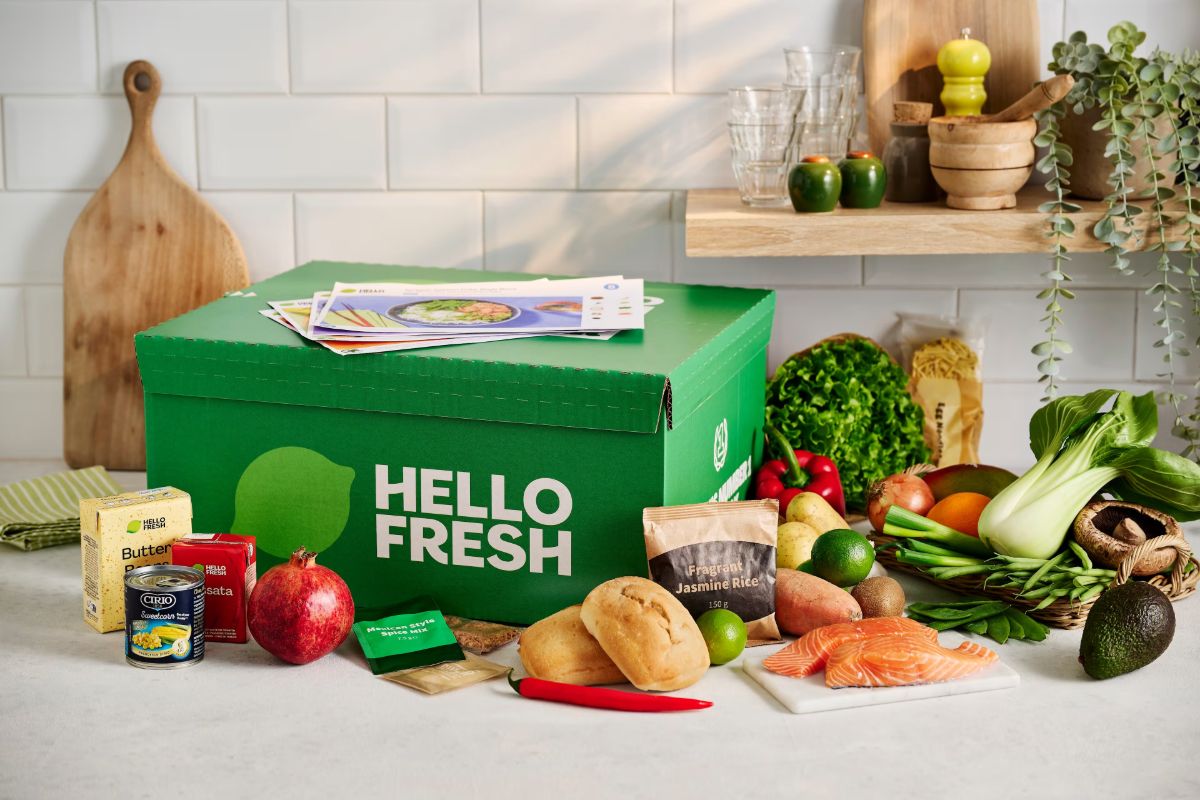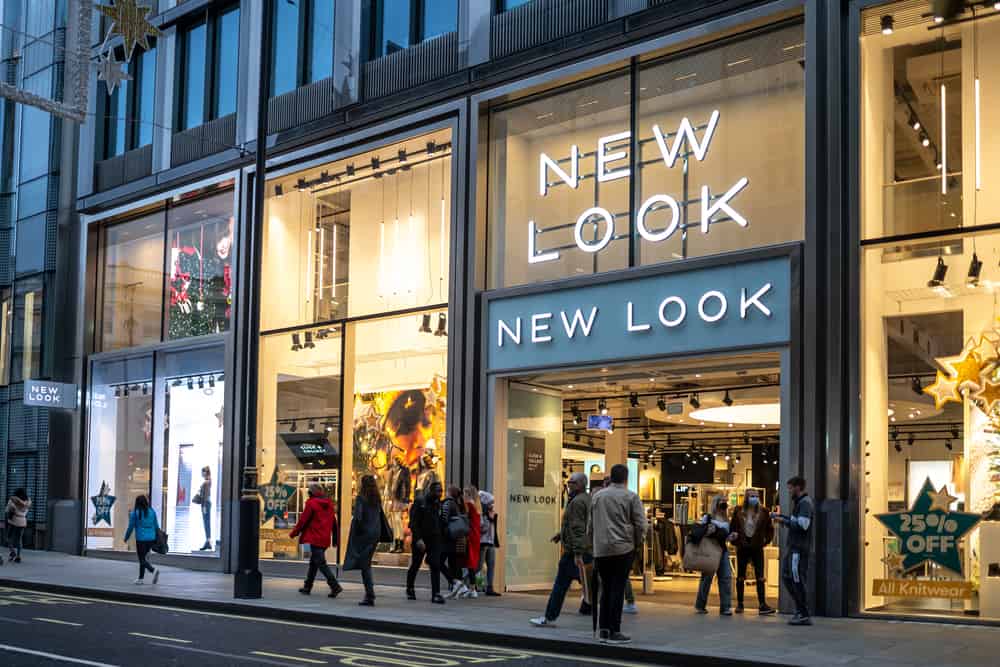The recent announcement of a proposed Sainsbury’s/Asda merger is set to shake up the grocery sector – and make the two retailers’ shareholders very happy. If the deal gets the go-ahead following an investigation by the Competition and Markets Authority (CMA), the two firms will begin integration with a view to the longer term but still with an eye on the quarterly figures. There will be more on the merger later in this article, but first a look at how a grocer with a different model is innovating through efficiencies for staff while dishing up ‘digital delight’ for customers.
The Co-op doesn’t sell groceries online. It does sell beds and electricals online, but that’s another story. Why, then, with a big merger on the cards, is InternetRetailing covering a different grocer?
The Co-op, as its name suggests, is a co-operative, so it isn’t beholden to shareholders. In fact, it is one of the world’s largest consumer-owned co-operatives with a history that can be traced back to 1844. This means that it can invest for the longer term without the need to return profits to shareholders, although members of the Co-op shared £61m last year with a further £13m earned by more than 8,000 community projects.
It’s a growing business both in terms of sales and stores. The retailer has enjoyed four consecutive years of like-for-like growth in food and it plans to open a further 100 stores this year. Its acquisition of wholesale and convenience store chain Nisa Retail was approved in May, and the group has just become exclusive wholesale supplier to the 2,200 Costcutter, Mace, Simply Fresh, Supershop and kwiksave convenience stores.
While it’s heartening to hear of expansion when so many other retailers are contracting – especially by a chain with 2,500 of its own stores in communities across the UK – the real story for InternetRetailing readers is how the Co-op is innovating with digital in store to benefit staff operations, increase efficiencies and improve customer satisfaction.
The group is testing a consumer-facing shop, scan and go initiative at its support centre in Manchester and this will be rolled out further this summer. Shoppers wanting the convenience of a grab-and-go shopping experience can use the Co-op’s Pay in Aisle app to scan items as they pick them up from the shelves and then pay from within the app without having to queue or visit a till. Payment is made directly from the customer’s payment card details stored securely in the app as part of the MasterCard Masterpass digital wallet.
The wallet also links to the customer’s Co-op membership account, which is credited automatically with a 5% reward when they buy own-brand products. “The technology, a UK-first, is designed to complement existing payment methods and provide a point of differentiation and added convenience for time-pressed consumers,” says Chris Conway, head of digital, retail at Co-op Food.
Delivery
The Co-op has customers with a range of different shopping and service needs and it recognises that they adopt technology at different paces. “This is a challenge and an opportunity,” says Conway. He says it already runs a free home delivery service for customers spending more than £25 in one of more than 200 of its stores. “This service, as you can imagine, is popular, in particular with young parents, those without access to transport, or the more vulnerable members of our communities, and we are exploring further ways in which to improve our last-mile experience.”
Amongst these are trials with Deliveroo, which the retailer is monitoring, and a recently initiated test with Starship. The Deliveroo trial is running from 5 stores in Manchester with customers able to order using the delivery firm’s app and get Co-op products delivered within the hour. “This is a useful test. We are learning what type of products customers want and how much they are enjoying the convenience of being able to get their order delivered within the hour, as well as testing how we pick our products within our stores,” says Conway.
“Another interesting trial is the partnership we have with Starship Technologies in Milton Keynes,” he adds. Customers in the area can choose from around 200 products online, order them via Starship and have them delivered using robotic technology for just £1. This trial, which has been live for a few weeks, is already proving a hit. “As with all programmes, the ambition is to learn fast, understand what our customers really want and decide on next steps,” explains Conway.
These test and learn initiatives are being run with the aim of seeing how online can support the convenience mission and speed up in-store shopping times.
It is this convenience model that Conway gives as one of the reasons why the Co-op doesn’t sell groceries online. “The Co-op is a community retailer, operating at the heart of local life. Over recent years, consumer habits have moved away from the ’big shop’ with customer shopping behaviour seeing frequency of visits increasing but basket sizes decreasing – people buying conveniently, as and when they need it. And our stores – whether in rural villages, train stations, universities or urban areas with the worker/commuter foot-flow – are all designed to fulfil the convenience shopping gap, whether that is food to go or food for the evening meal.”
For staff
The Co-op also recognises that the retail environment is tougher than it has ever been, so its innovation in stores is also helping it to prepare the business for the future with agile and efficient ways of working to provide greater consumer choice and convenience.
Underpinning its plans are:
● An efficient Co-op, with a clearer focus on serving customers and members;
● More closely interconnected business areas operating under the strong Co-op brand;
● A greater focus on convenience and relevance, with market-leading products and services at competitive prices;
●Across the wider business, ventures in new markets with an agile, capital-light, digital-first approach to disrupting markets.
Some of the projects that the Co-op has been working on involve making operations more efficient for staff and thus freeing up their time for more customer-facing services. Face recognition technology has been tested as a way to speed up entry for delivery drivers when they arrive at a store. The technology has also been trialled with customers buying age-restricted products such as alcohol at self-service checkouts. Rather than a store colleague having to verify the customer’s age, the facial recognition software permits the sale of alcohol only to anyone who looks over 30.
Operational task management has been digitised so everyone in store has a prioritised list of tasks for the day, including when they need doing as well as how. The Co-op has also developed a ‘How do I?’ mobile application which helps staff who have questions, from how do I scan a credit card to how do I book a holiday. In the past, they would have asked each other or called head office to get the answers, so this system, which Conway wants to roll out to all stores, saves time in store and at head office.
Another app, Shifts, improves store colleagues’ ability to see and manage their work patterns. More than 10,000 signed up to use it in just over 48 hours.
Digital is also helping with merchandising in store, again saving colleague time. Cameras in some stores can take a number of pictures per minute while scanning for gaps on shelves. The user interface is then able to show real-time on-shelf availability, which the Co-op says has lots of use cases, and includes valuable data such as showing which products are in the wrong place. A system using machine learning can then feed a store colleague’s mobile device with information about products that need to be moved or replenished.
Another technology that is showing promise for the retailer is shelf-edge labels. These are being trialled in six stores for applications including price changes and compliance across the label, barcode, identifiable codes and sizes. “They also make re-merchandising the fixture much easier,” says Conway, explaining how they could be helpful if the layout of a store is changed for the Christmas period, for example.
Another big benefit could be incorporating POS into the labels, to highlight reductions in price.
“Not only do we save on time changing labels but we’d also use a lot less paper, which benefits everyone. Reducing our environmental impact is, and always has been, at the core of the Co-op’s efforts. I don’t think price changes alone are a big enough reason to roll this out, but the whole package is what makes this attractive. It’s a decision that needs careful consideration.”
He says that Co-op Food needs to be “competitive and innovative, and this means being efficient and agile in how it works”. He adds: “We’re transforming the way we run our stores for members and customers, but more importantly, making things simpler for colleagues. It’s a rewiring of convenience, and we’ve already achieved a lot in the last year.
“Everything we’re trying and testing is built for colleagues by colleagues. We are also in the middle of moving off all our legacy systems internally and implementing a number of SAP solutions which, again, future proofs us as far as you can while being an enabler of what we decide to do in this [omnichannel] space.”
Conway recognises that the online grocery market is significant and the Co-op will continue to closely monitor market changes. “It would be wrong for us to ignore it.”
And no one in the grocery space – or for that matter, the retail sector – can ignore the recent announcement of Sainsbury’s and Asda’s planned merger.
Sainsbury’s/Asda
At the end of April, Sainsbury’s and Walmart announced plans to merge into one combined business. This would, they said: “create a dynamic new player in UK retail with an outstanding breadth of products, delivered through multiple channels”. The new business would have greater scale, is targeting savings of £500m through ‘operational efficiencies’, as well as passing on price reductions of around 10% to shoppers.
The merger will create one of the UK’s leading grocery, general merchandise and clothing retail groups with combined revenues of about £51bn for 2017. It will maintain the companies as separate brands and has promised no store closures in the 2,800-strong Sainsbury’s, Asda and Argos store network. As well as maintaining separate websites, the companies say they will “create greater choice for customers through more store formats and channels, with a combined 47 million customer transactions per week”.
The close relationship with Walmart, as a strategic partner and long-term shareholder, will also enable the transfer of knowledge and technology developments between the three companies, something that is already seen between Asda and Walmart.
The combined business will be chaired by the Sainsbury’s Chairman and led by its CEO and CFO. Asda will continue to be run from Leeds with its own CEO, who will join the Group Operating Board of the combined business.
Commenting on the merger, Mike Coupe, CEO of Sainsbury’s, said: “This is a transformational opportunity to create a new force in UK retail, which will be more competitive and give customers more of what they want now and in the future. It will create a business that is more dynamic, more adaptable, more resilient and an even bigger contributor to the UK economy. Having worked at Asda before Sainsbury’s, I understand the culture and the businesses well and believe they are the best possible fit. This creates a great deal for customers, colleagues, suppliers and shareholders, and I am excited about the opportunities ahead and what we can achieve together.”
Kantar’s head of retail and consumer insight Fraser McKevitt believes that the merger is a pivotal moment for the British grocery market. He comments: “A merger between Sainsbury’s and Asda would transform the traditional landscape placing nearly a third of market share in the hands of the joint supermarket giant, though the march of the discounters – and any enforced store closures – could impact this figure.”
Sainsbury’s has 15.9% of the grocery market, according to Kantar Worldpanel’s data for the 12 weeks to April 22, while Asda’s market share stands at 15.5%. The combined business would therefore be larger than Tesco, which has a 27.6% slice of the market.
The two supermarkets also have different customer bases. “Asda achieves nearly two-thirds of its sales outside London and the south east of England in contrast to Sainsbury’s, which registers 59% of its sales in those two areas. Sainsbury’s also appeals to more affluent shoppers (ABC1): this demographic accounted for 62% of all sales at Sainsbury’s in comparison to 46% of sales at Asda,” McKevitt says.
Terry Hunter, UK managing director, Astound Commerce, comments: “The proposed Asda/Sainsbury’s merger is a clear statement to the retail industry. The potential deal shows that the two chains feel they will be stronger together as they reposition themselves to combat the growing threat from the low-cost German supermarkets and Amazon. The likes of Aldi and Lidl have made huge strides in recent years to take market share away from the Big Four supermarkets as their budget offerings have connected with shoppers on an unprecedented level. A Kantar Worldpanel report published last year showed that Lidl and Aldi’s market share continues to grow year on year.
“Added to this shift in the retail marketplace is the elephant in the room that is Amazon. The retail behemoth added to its armoury with the Whole Foods acquisition and potentially more worrying was the opening of the retailer’s first checkout-less store earlier this year. The Big Four have nervously watched on as Amazon has touted the idea of opening similar stores in the UK. They will know that the US retailer will be able to outmanoeuvre them and undercut them every step of the way. Morrisons has tried to get ahead of the game by partnering with Amazon to help it fulfil online grocery deliveries, further proof that that supermarkets are having to adopt new strategies to fend off the competition.
“One of Sainsbury’s strengths lies in the fact that it has a strong online offering through its acquisition of Argos in 2016. As well as this, the retailer announced recently that it was expanding its tech team by nearly 25%. This ongoing commitment to expanding its omnichannel offering is interesting and shows an awareness of the threat from across the Atlantic. If the deal goes through, combining Sainsbury’s online strengths with Asda’s large physical stores will be the very definition of an omnichannel approach. This is further proof that investing in a digital strategy is paramount for even the most traditional retailers. As Sainsbury’s and Asda have proven, retailers need to invest and invest now.”
Chris Edger, professor of multi-unit leadership at Birmingham City University’s Business School, says: “Increased buying power will also reduce overall costs, making the combined entity more capable of surviving impending headwinds.”
He adds: “The complexity of modern retail means that merging two companies with very different cultures, systems and processes is going to be very, very difficult. Although it is the Sainsbury’s management team that will be driving everything, I think the timetable for transformation from two to one will be longer than anyone can predict.”
The CMA started an investigation into the proposed £12bn merger in May, gathering information from Sainsbury’s and Asda and giving other retailers, interested parties and consumers the opportunity to comment.
As with all retailers, the two supermarkets are trying to increase market share, the reasons for customers to visit – whether online or to a physical store – decrease operational costs while also shielding themselves from increased competition from the German discounters and pureplays such as Amazon, which is increasingly moving into the grocery space.
As Sainsbury’s former-CEO Justin King once explained, shoppers have choice over which supermarket they visit, and it’s easy for them to turn the other way at a roundabout so the grocer had to give them a good reason not to. And it is this reason to visit and points of differentiation that the combined business will be looking for across its omnichannel, multibrand grocery and general merchandise business. It’s something that all players in the grocery sector are trying to do and it’s the ones in the middle that are being squeezed the most.
Tesco – with Booker – has scale. Lidl and Aldi have low prices for consumers. Ocado has the efficiencies of an online proposition with best-in-class automated warehousing. Amazon will be a threat to all.
But as Chris Conway says when looking to a future in which the Co-op could sell online: “When the Co-op starts selling online we won’t be asda.com or morrisons.com, we’ll be something very different and unique.” What that would be is yet to be decided. He adds: “I think what we’ll see will be a more varied and tailored offer. But the data will tell us that.”
He says: “Retailers need to be innovative and agile in their operations, and the Co-op is committed to exploring new technologies and seeking new ways to innovate, getting closer to the needs of our members and customers – what they want, when they need it – and creating increased consumer choice, value and convenience. We are exploring a number of opportunities. I’ve recently joined the Co-op Food team, focusing on our digital development and to turn some of our trials into workable and scalable solutions for our customers and members. Fail fast is a term I’m a big fan of. The philosophy values experiments, development and learning. It is an exciting space and the business has the appetite to explore and, importantly, learn from innovative solutions, and I am confident some of these trials will become real winners for us, trials that we will grow and develop, and we’ll see real member, customer or colleague benefits as a result. Watch this space.”
Image courtesy of the Co-op








